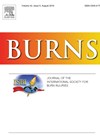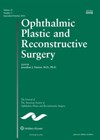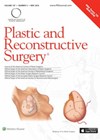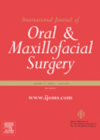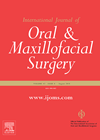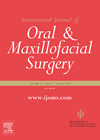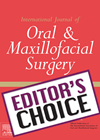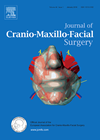
Journal Reviews
The value of bariatric specific chart to initiate resuscitation
This is an interesting well written retrospective analysis of resuscitation in bariatric patients, but the study has two significant flaws. The first flaw is that parklands formula, with estimate from lund browder charts, is a guide and a best estimate...
Early hypothermia as risk factor in severely burned patients
This retrospective outcome study looks at patient temperature on admission and if this affected outcome and what variables play a part in the patient’s temperature. Again, this is well written and thought out, but is limited by sample size. They...
Vitamin D and thyroid eye disease
This is a retrospective review of vitamin D levels in patients with thyroid eye disease (TED). Vitamin D levels in 89 patients with Grave’s disease and TED were compared against 89 patients with Grave’s disease and no TED. They also...
Ablepharon-macrostomia syndrome
The ablepharon-macrostomia syndrome is a very rare condition caused by a dominant mutation in the TWIST2 gene. Congenital defects include rudimentary eyelids, macrostomia, ambiguous genitalia and campodactyly. Neonates are at risk of severe corneal exposure without intervention. Previous reports have...
Maximising the results of blepharoplasty
The aesthetic anatomy of lower eyelid is detailed leading to discussion of operative technique to achieve the goals of blepharoplasty; for the lower lid these are a youthful lid cheek junction, a positive canthal tilt and no scleral show. The...
Surgical management of refractory osteoradionecrosis
This is a French single-centre, 10-year experience of 55 surgical resection and reconstruction procedures. They claim an overall effectiveness rate of 92.3%. Thity-six segmental and 19 marginal mandibulectomies were performed. A variety of free flaps were used with soft tissue...
Hierarchy of orthognathic surgical stability
This study was designed as ‘an overview’ of secondary studies and analysed 15 articles. Two procedures were considered highly unstable, a bilateral sagittal split osteotomy for clockwise rotation of the mandible with bi-cortical screw rigid internal fixation, and posterior maxillary...
Delays in oral cancer
This is a review from Canada where they attempt to relate the delays in oral cancer presentation to treatment and the impact on stage, diagnosis and survival. They recognise that potentially the most significant delay is between the patient first...
Locked or unlocked
This is as systematic review and meta-analysis from the Netherlands, evaluating postoperative complications of mandibular fractures using locking and non-locking systems. It is suggested that postoperative complications of surgical treatment of mandibular fractures occur in 20-26% of patients, and it...
Do bicycle helmets prevent facial injuries
This is an analysis from Germany where they reviewed over 7000 bicycle accidents over a 16-year period that met their inclusion criteria. Over 1000 had a facial injury (bone or soft tissue) with helmets being worn in 11.8% of accidents....
Using autologous blood to reduce post-operative infections
The removal of impacted wisdom teeth is a commonly carried out surgical procedure in maxillofacial surgery. Apart from the usual complications of postoperative bleeding and wound infection, the most painful one is alveolar osteitis. This is mainly dependent on retaining...
Rectal ketamine during paediatric burn wound dressing procedures
Ketamine is well reported as being safe to use in providing analgesia, sedation and amnesia in paediatric populations. This prospective, randomised, double-blinded study aimed to establish an optimum dose of ketamine in burns treatment settings in children aged six months...

